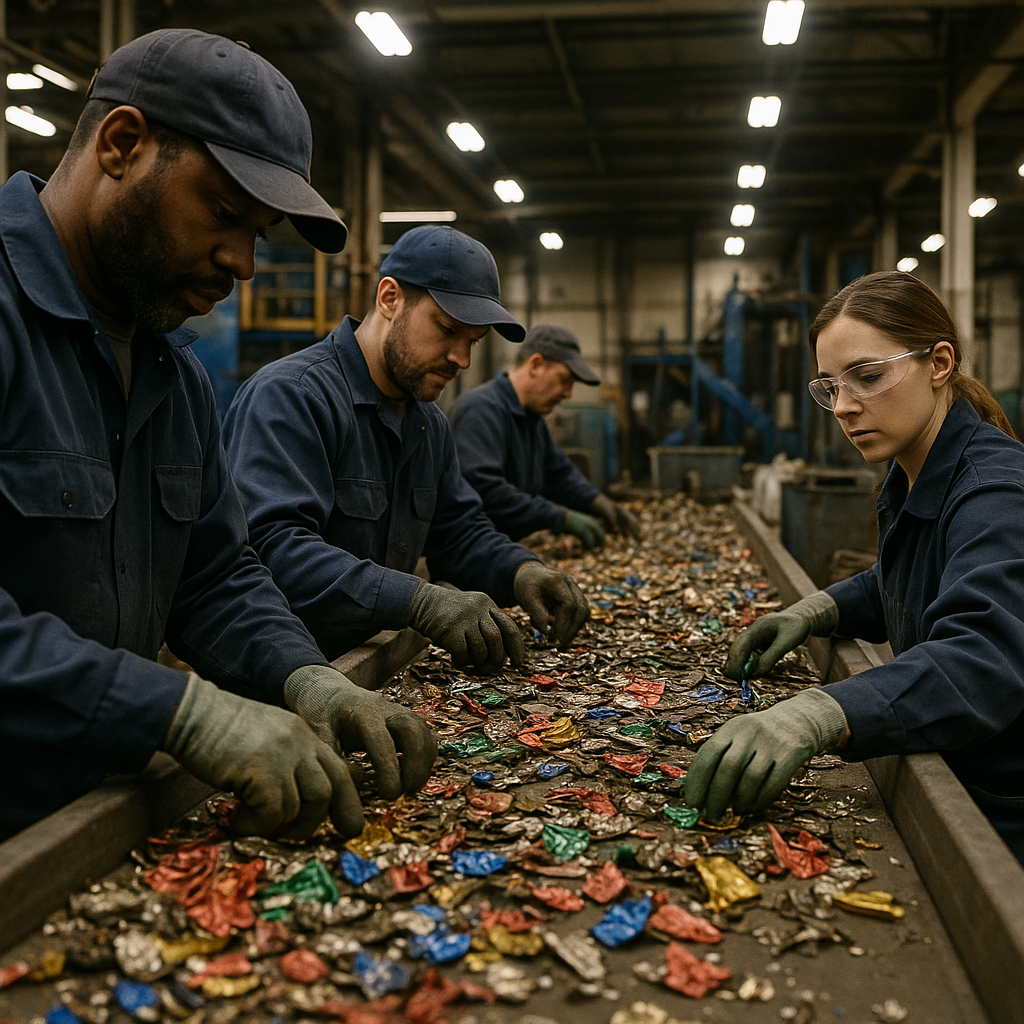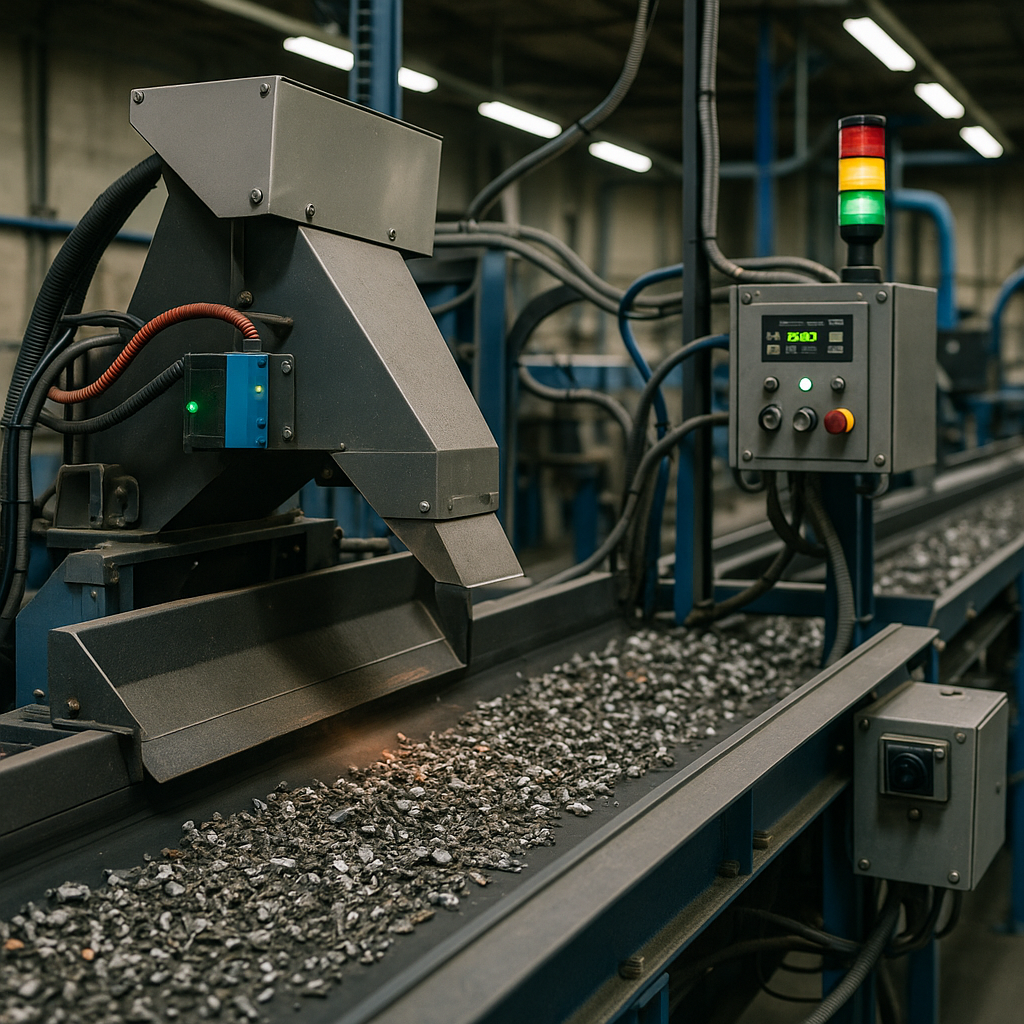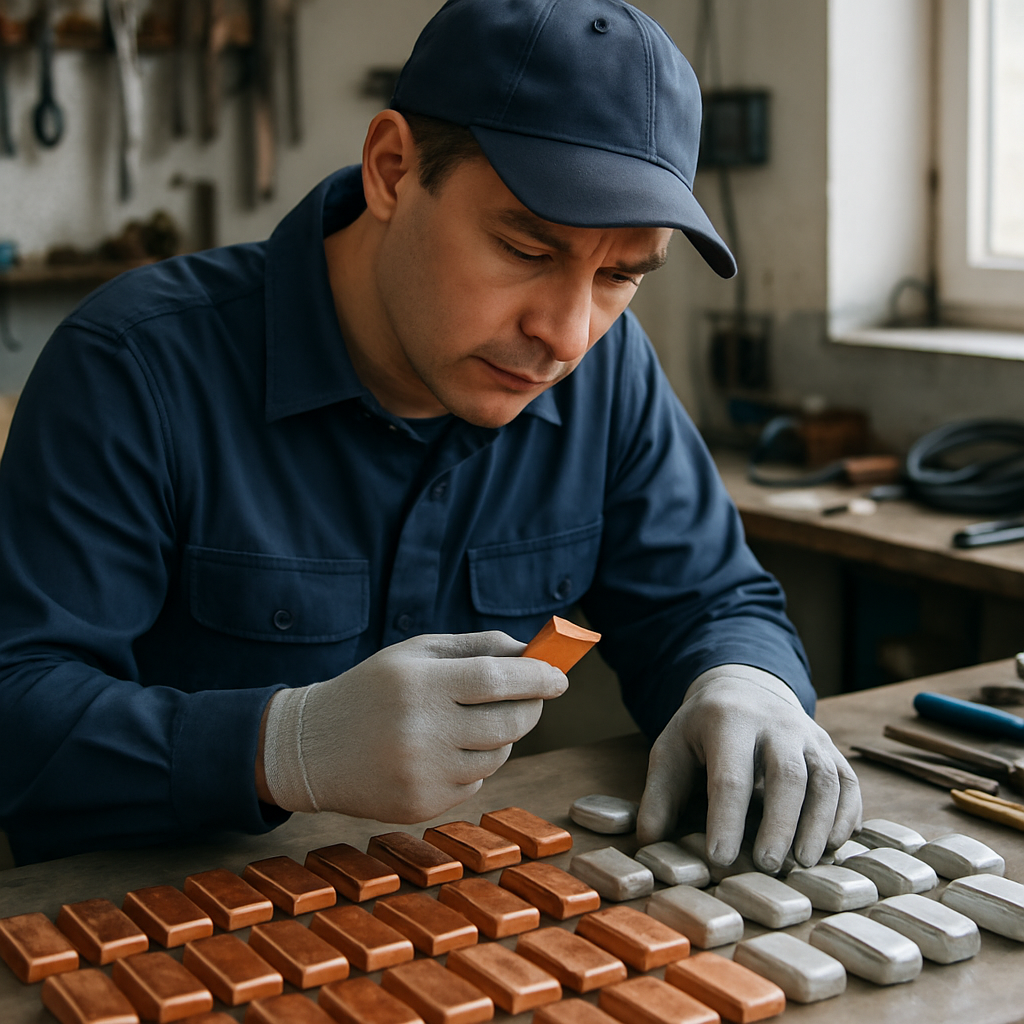5901 Botham Jean Blvd, Dallas, TX 75215
Non-Ferrous Metal Separation: A Guide to Techniques & Maximizing Value
October 23, 2025Properly sorted non-ferrous metals can increase recycling returns by 20-40% compared to mixed scrap. This significant profit margin makes metal separation one of the most crucial processes in the scrap recycling industry. Non-ferrous metals like aluminum, copper, and brass command premium prices because they lack iron content and possess valuable properties that make them highly sought after.
Non-ferrous metal separation involves identifying and isolating these valuable materials from ferrous metals and other waste products. These metals are prized for their conductivity, corrosion resistance, and lightweight properties. The process requires careful sorting techniques ranging from simple magnetic tests to advanced separation technologies.
The financial benefits of proper non-ferrous metal separation extend beyond immediate profits. By efficiently sorting these materials, recyclers contribute to resource conservation and reduce the need for environmentally damaging mining practices. This dual benefit of economic advantage and environmental sustainability makes mastering non-ferrous metal separation essential for anyone serious about maximizing value in the scrap metal industry.
What Are the Basic Non-Ferrous Metal Separation Techniques?

The foundation of non-ferrous metal separation relies on two basic yet effective methods: visual inspection and the magnet test. These techniques require minimal equipment and provide reliable results for sorting metals in recycling operations.
Visual Inspection Technique
Visual inspection involves identifying metals by their physical characteristics. Color serves as a primary indicator—copper has a distinctive reddish-brown hue, while aluminum appears silvery-white with a dull finish. Brass exhibits a golden yellow color, and lead has a bluish-gray appearance that darkens when exposed to air.
Weight offers another important clue. Copper feels heavier than aluminum when comparing similar-sized pieces. Lead has a surprisingly heavy feel relative to its size, while titanium feels lighter than expected for its strength. These weight differences help recyclers make preliminary identifications before applying more definitive tests.
The Magnet Test
The magnet test offers a quick, reliable way to separate ferrous from non-ferrous metals. This technique is based on a simple principle: ferrous metals contain iron and are magnetic, while non-ferrous metals lack iron and don’t respond to magnets.
To perform the magnet test:
- Take a strong magnet (even a refrigerator magnet will work)
- Place the magnet against the metal item
- Observe whether the magnet sticks or pulls away easily
- If the magnet sticks firmly, the metal contains iron and is ferrous
- If the magnet doesn’t stick, the metal is non-ferrous
This test instantly classifies metals into two categories. Non-ferrous metals like copper, aluminum, brass, lead, and zinc will show no magnetic attraction. However, be aware that stainless steel can sometimes confuse recyclers—despite containing iron, some grades have such low magnetic properties they may appear non-ferrous.
Essential Tools for Basic Metal Sorting
Setting up an effective metal sorting station requires several basic tools to ensure accurate identification and safe handling:
- Strong neodymium magnets for reliable magnetic testing
- Sorting bins with clear labels for different metal types
- Cut-resistant gloves to protect hands from sharp metal edges
- Safety glasses to shield eyes from small metal fragments
- Metal file for exposing true metal color beneath surface coatings
- Digital scale for weighing and comparing density
- Basic reference guide with photos of common metals
- Good lighting to accurately assess color and texture
These tools enable recyclers to sort non-ferrous metals with greater accuracy. When combined with experience, these simple techniques help identify most common metals encountered in recycling operations.
For more complex sorting needs, recycling facilities may employ advanced technologies, but these basic techniques form the foundation of all metal separation processes. Their simplicity and effectiveness make them essential skills for anyone involved in metal recycling.
While these basic techniques might seem rudimentary compared to industrial separation methods, they remain vital in the recycling industry. Even advanced recycling facilities rely on these fundamental approaches as first-step sorting methods before materials reach more sophisticated equipment.
What Advanced Technologies Are Used for Non-Ferrous Metal Separation?

Professional recycling facilities employ advanced technologies to separate non-ferrous metals from mixed waste streams with remarkable precision. These sophisticated systems ensure higher recovery rates and purity levels, surpassing what is achievable through manual sorting alone.
Eddy current separators are central to non-ferrous metal recovery. These machines use electromagnetic induction to create magnetic fields that repel conductive non-ferrous metals like aluminum, copper, and brass. As mixed materials pass over the rapidly rotating magnetic rotor, the non-ferrous metals are repelled into a separate collection area, while non-metallic materials continue along their original path.
Optical sorting systems use specialized cameras and sensors to identify metals based on visual characteristics. These systems capture images of passing materials and use advanced algorithms to distinguish between different types of metals and contaminants. The technology can detect subtle differences in color, brightness, and shape to sort materials at high speeds with exceptional accuracy.
X-ray fluorescence (XRF) analyzers are among the most advanced sorting technologies. These systems direct X-rays at materials, causing them to emit secondary X-rays with unique energy signatures for each element. The analyzer detects these signatures, allowing for precise identification of metal composition down to specific alloys. This enables recyclers to sort metals based on exact elemental makeup rather than just general categories.
Air classification systems separate materials based on weight and density differences. These systems use controlled airflow to lift lighter particles while allowing heavier ones to fall. For non-ferrous metal recycling, air classifiers effectively remove dust, paper, and plastic contaminants from metal streams. This technology is especially valuable as a pre-treatment step before materials reach more specialized sorting equipment.
Sensor-based technologies can detect and remove particles smaller than 1mm in size from mixed streams, achieving purity rates exceeding 99%. These systems operate continuously with minimal human intervention, significantly increasing throughput while reducing labor costs. For recycling facilities processing large volumes of electronic waste, automotive scrap, or municipal solid waste, these technologies are essential for meeting strict quality standards and maximizing material recovery.
Integrating these advanced separation technologies allows recycling facilities to recover valuable non-ferrous metals that might otherwise end up in landfills. This not only conserves natural resources but also reduces the energy consumption associated with primary metal production from raw materials.
How Can You Maximize Value When Sorting Non-Ferrous Metals?

Non-ferrous metals such as copper, aluminum, and brass generally command higher prices than ferrous metals at recycling centers. Effective sorting techniques can increase your returns by 20-40% compared to unsorted materials. Knowing how to separate these metals by type and grade will ensure you receive maximum value for your recyclables.
Sort by Metal Type First
Start with basic separation using the magnet test. Since non-ferrous metals don’t stick to magnets, this is a quick way to identify potentially valuable materials. After separating non-magnetic metals, sort them by type through visual identification.
For instance, copper exhibits a reddish-brown color, aluminum is lightweight with a silvery appearance, and brass has a yellowish or gold-like hue. Proper identification ensures each metal type is placed in the appropriate collection bin, preventing cross-contamination that could reduce their value.
Remove Contaminants Thoroughly
Clean metals are sold at significantly higher prices because they require less processing. Remove all non-metal attachments and contaminants that might lower the value. This includes stripping insulation from copper wires, removing plastic casings from electronics, and cleaning off paint or coatings when feasible.
Eliminating contaminants can increase value by 30-50%, especially for high-value metals like copper. For smaller gauge wire, use wire strippers. For larger bundles, consider whether the time investment justifies the potential return.
Separate by Grades Within Each Metal Type
Within each metal category, further sorting by grade can significantly boost value. Copper, for example, has several valuable grades:
- #1 Bare Bright Copper: Clean, uncoated wire with no attachments
- #1 Copper: Minimal contaminants, at least 96% pure
- #2 Copper: Material with paint, solder, or some attachments
The price difference between grades can be substantial. #1 copper typically commands 10-30% more per pound than #2 copper. Similarly, clean aluminum extrusions are worth more than cast aluminum from engine parts.
Handle Electronic Scrap Carefully
Electronics contain various valuable metals, including gold, silver, and platinum in circuit boards. Dismantling electronics instead of recycling them whole can yield better returns. Separate circuit boards, copper wiring, and aluminum casings for individual recycling.
Motherboards and graphics cards often contain more precious metals than other components. Consider collecting these items separately until you have enough to make processing worthwhile. Some specialized recyclers offer premium prices for pre-sorted electronic components.
Give Special Attention to High-Value Items
Certain non-ferrous items require special handling due to their exceptionally high value:
Catalytic converters contain platinum, palladium, and rhodium—precious metals with significant market value. Instead of grouping them with general scrap, find recyclers who specialize in catalytic converters to receive appropriate compensation for these valuable components.
Clean, high-grade copper radiators should be separated from those with iron fins or excessive contamination. The cleaner the radiator, the higher the price it’ll command at the scrap yard.
Organize Your Collection System
Establish a systematic collection approach with labeled containers for different metal types and grades. This prevents accidental mixing and makes transportation to recycling facilities more efficient. Consider using:
Use sturdy bins for heavier metals like copper and brass. Keep different grades separated and store valuable materials securely. For aluminum, lightweight bins or bags work well. You can crush cans to save space while keeping extrusions separate for higher value.
Optimizing Your Non-Ferrous Metal Separation Process

Effective non-ferrous metal separation is crucial for maximizing profits in the scrap metal recycling industry. Combining basic techniques like visual inspection and magnet tests with advanced technologies such as XRF scanning and electrochemical separation forms a powerful approach to achieving optimal results. These methods enable recyclers to achieve high purity levels and superior sorting efficiency, which directly impacts profitability.
The recycling landscape is continuously evolving, with new separation technologies emerging regularly. Staying informed about market trends and innovations in separation methods is essential for maintaining competitiveness in this dynamic industry. Organizations committed to continuous improvement in their sorting processes will consistently see better returns and establish a stronger position in the market.
For assistance in optimizing your non-ferrous metal separation processes, contact Okon Recycling at 214-717-4083. Our team of recycling experts can help you implement the most effective separation techniques to maximize your recycling profits.
